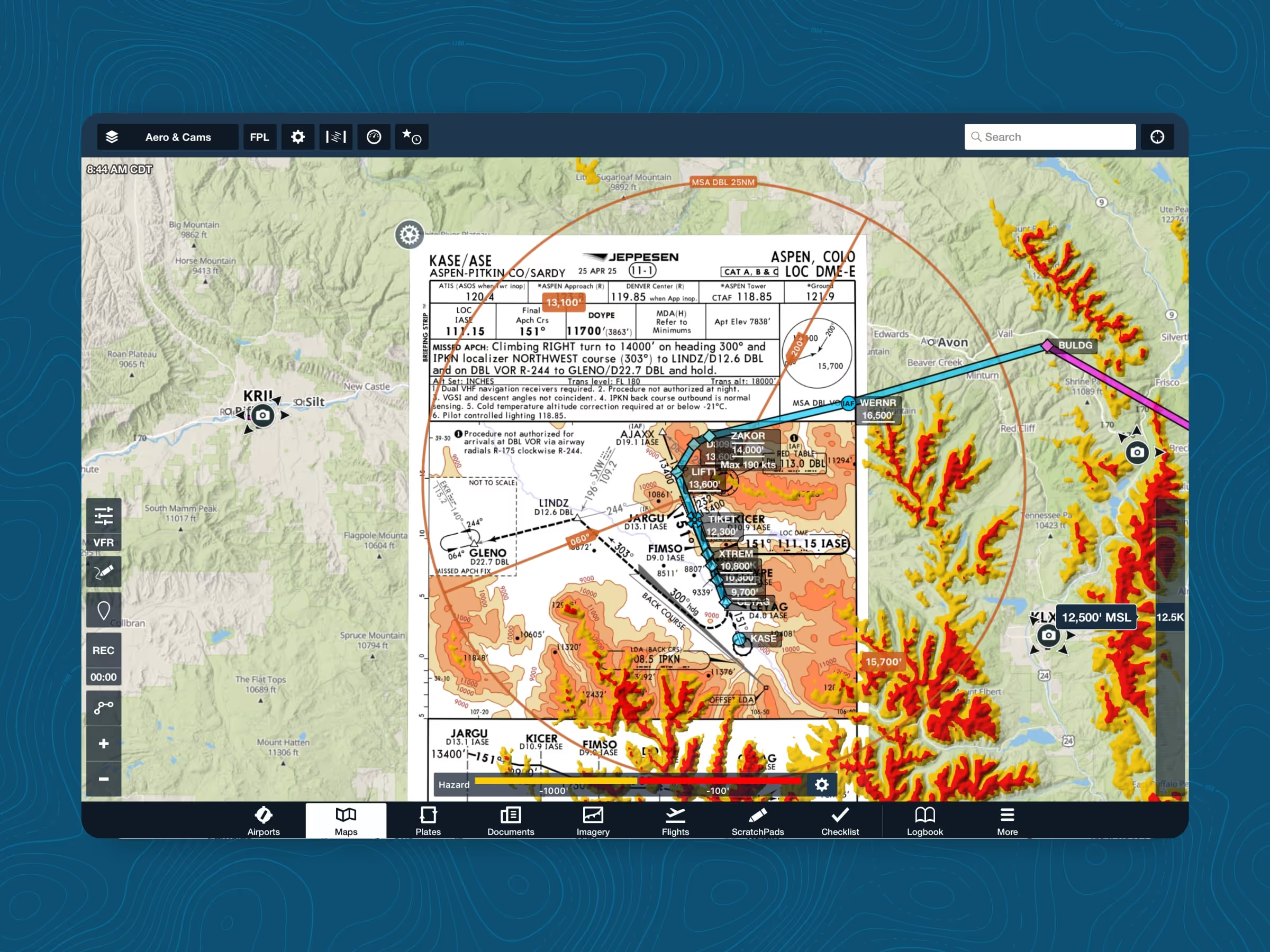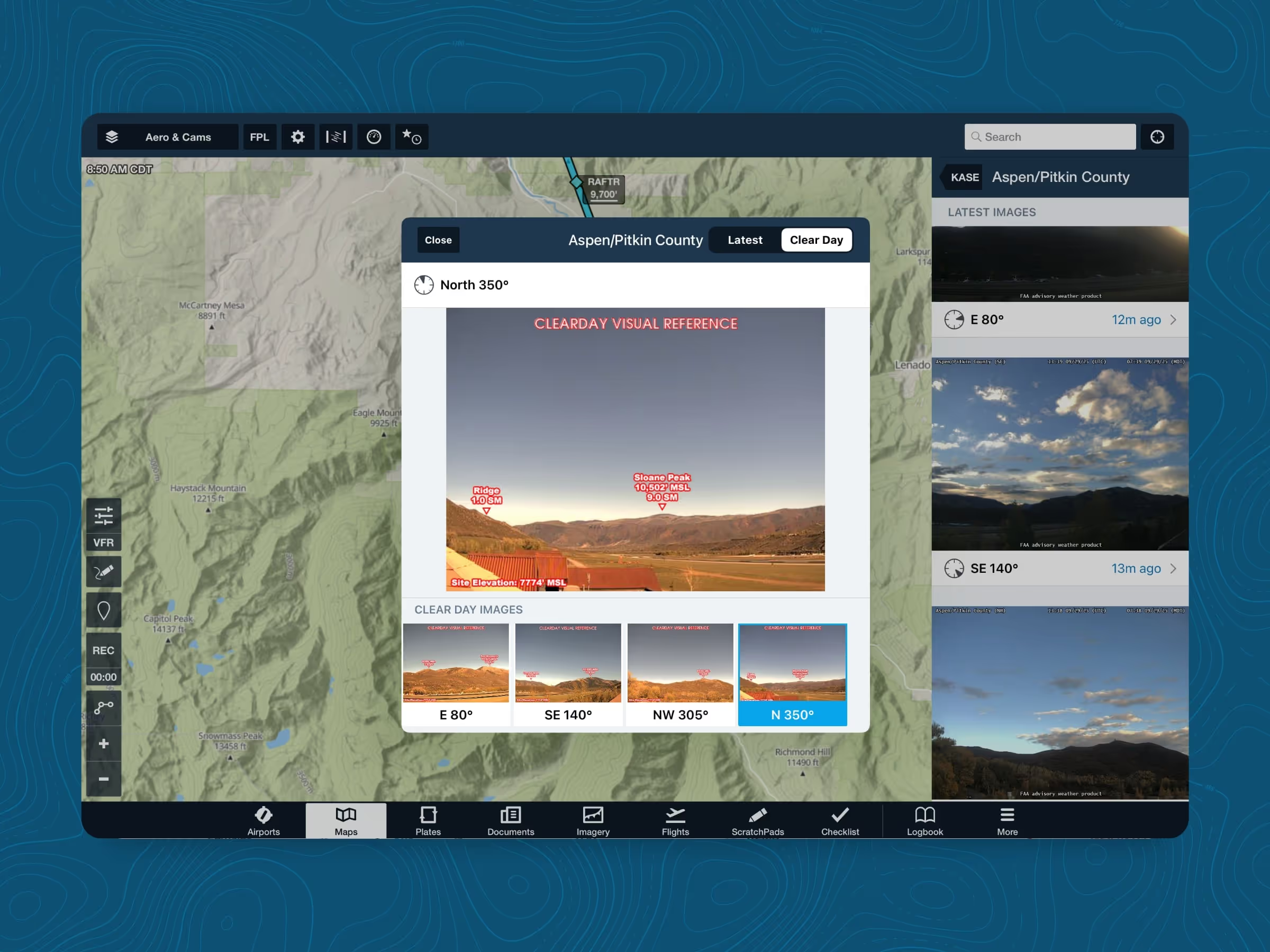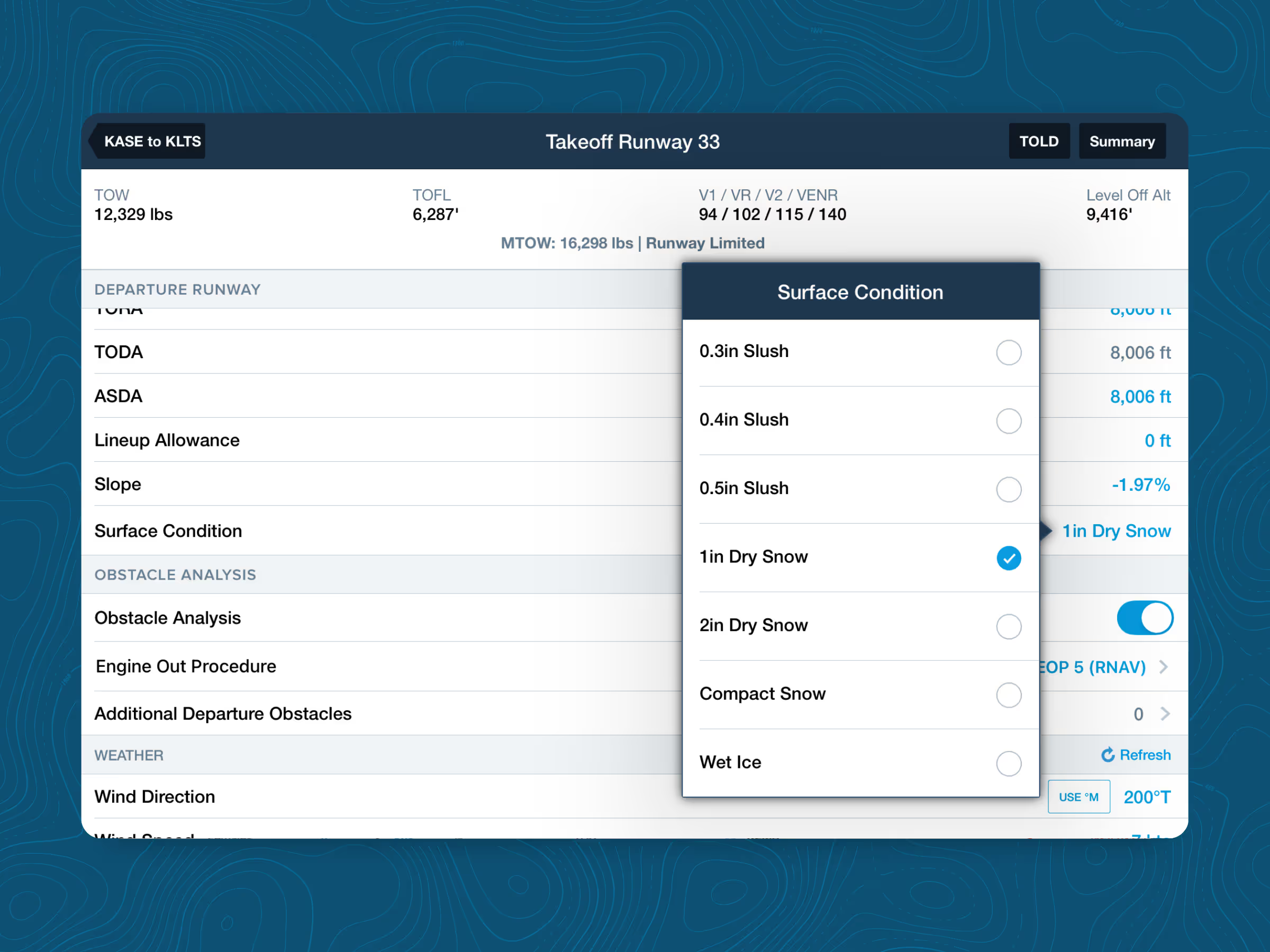Beyond the numbers: Mastering Aspen-Pitkin County (KASE)

Flying into the world’s most demanding airports requires more than accurate numbers on a performance chart. It requires a deeper understanding of how altitude, terrain, weather, and operational constraints interact in ways that can challenge even the most experienced crews.
This is the first in our series, Beyond the numbers: Mastering Aspen-Pitkin County (KASE). Each blog will highlight different airport environments, the risks your crews face, the practices that set successful flights apart, and the technology that helps you operate with confidence at both ends of the runway.
We’re starting with Aspen-Pitkin County Airport in Colorado, a field that has earned its reputation as one of the most challenging places to operate in North America.
The high-altitude challenge
Business aviation’s demand for mountain destinations has made Aspen-Pitkin County Airport (KASE) a frequent test for performance and flight planning. At 7,820 MSL, with a single 8,006-foot runway and steep terrain on all sides, Aspen is not a place where standard assumptions hold true. Every calculation matters, and margins that feel generous at sea level quickly disappear in the mountains.
Performance degradation at altitude
High elevations degrade aircraft performance across the board. Reduced air density lowers engine thrust, stretches takeoff and landing distances, and weakens climb performance. In Aspen, the effect is amplified. Small shifts in temperature, passenger weight, or baggage can move your aircraft from within limits to out of limits in a single recalculation.
Variables unique to mountainous terrain
Mountain weather is much different from the coast or plains, and weather at Aspen can be as challenging as the terrain. Temperature inversions can trap fog in the valley while the ridgelines remain clear, creating deceptive visual cues. Orographic lifting generates turbulence and wind shear that standard forecasts often miss or underestimate, meaning your crew must be prepared for conditions that change faster than at most airports.
Non-standard approach and departure procedures
Since Aspen sits in a valley surrounded by the Rockies, procedures are different from what most crews are used to. With mountains forming a natural funnel, missed approaches and engine-out procedures are limited. For turbine operators, Aspen operates as a one-way-in, one-way-out airport: landing on Runway 15 and departing on Runway 33, regardless of weather conditions.
Both the RNAV and LOC DME approaches require glide paths greater than six degrees, more than twice the standard three-degree approach angle at most airports.

Departures are equally challenging.. During peak traffic, Aspen uses the “Westbound-in-front-of” (WBIFO) procedure, where departing traffic climbs to a specified altitude before turning directly in front of arriving traffic on Runway 15. It’s unusual, and requires very precise movement and communication.
Operational risk factors
Operating into Aspen is more than adjusting for altitude. The combination of thin air, mountainous terrain, and volatile weather creates a set of risks your crews must anticipate and manage before committing to a trip.
The greatest operational risk from weather isn’t just turbulence or visibility. It’s how fast conditions can change and how they alter performance margins. A runway that was dry at briefing may be snow-covered by the time of arrival. Braking action can move from good to poor in a matter of minutes. In the summer, hot afternoons can increase density altitude well above 10,000 feet, giving even the most powerful aircraft a slim performance margin.
Current industry challenges
All the complexity of operations in and out of Aspen exposes the limitations of traditional flight planning. When multiple variables change simultaneously, fragmented workflows struggle to provide the precision and speed that mountain operations demand.
Disconnected systems slow critical decisions
Most flight operations rely on fragmented systems that separate performance analysis calculations from flight planning. Crews typically use one application for route planning, a different third-party for performance calculations, and their EFB for navigation and charts. This fragmentation creates friction at exactly the moments when speed matters most.
Consider a crew taxing for departure on Runway 33 when the winds shift to a seven-knot tailwind. To update takeoff performance, the pilots open a separate performance system, update wind values and temperature data, then return to their EFB to brief the updated performance calculations. This consumes valuable time and increases the risk of data entry errors when rushing to meet a departure slot or respond to changing conditions.
On its own, a single variable change doesn’t slow things down. But when extra passengers arrive, winds shift, and temperatures rise all at once, the workload compounds. In Aspen, that’s what happens more times than not. Crews end up juggling multiple systems at the very moment they need clarity.

Best practices for mountain operations
Operators who succeed in Aspen do so by applying disciplined planning, deliberate communication, and conservative judgment.
Timing and weather analysis
At high-altitude airports, timing is a critical step in planning. The time of day you depart is just as important as how you depart. In the summer, many operators schedule departures for early morning, when cooler temperatures improve performance margins. Winter operations are not necessarily about time of day, but rather about the runway condition reports and braking action advisories. Real-time weather monitoring must become part of the workflow.
Perhaps the most important best practice is knowing when not to fly. Aspen Airport, much like other high-altitude mountainous airports, doesn’t reward improvisation. Operators with the best safety records are those willing to divert, delay, or cancel when margins shrink too far.
Clear coordination and decision-making
Clear communication between planners and crews is crucial in an environment where last-minute changes are common. Establishing hard go/no-go criteria before departure prevents indecision under pressure.
It’s equally important that everyone, from planners to flight crews, works with the same information. When teams operate out of fragmented systems, updates move slowly, and details get lost in translation. Integrated workflows keep all stakeholders aligned in real time, reducing the risk of missed changes and improving confidence in every decision.
Technology solutions for enhanced operations
Even the most experienced crews can only work with the information available to them. At an airport like Aspen, where conditions and margins shift quickly, manual processes aren’t fast enough, and fragmented workflows leave too much room for error. Technology designed for mountain operations closes the gap by automating calculations, synchronizing updates, and standardizing procedures across the team.
Automated performance analysis
ForeFlight Runway Analysis provides your crews with real-time performance data tailored to your aircraft and current conditions. Instead of flipping between applications and manually updating weather values or load sheets, crews can instantly evaluate takeoff and landing distances with current weather, field elevation, and surface conditions already factored in.

At Aspen, last-minute changes are unavoidable, whether it’s an extra passenger, shifting winds, or a runway condition update. With Runway Analysis, recalculations are instant. Crews can adjust variables and immediately see updated performance numbers. This eliminates the back-and-forth between applications and reduces the risk of transcription errors.
Standardized workflows across the operation
Consistency is just as important as accuracy. When flight planners, dispatchers, and pilots all use the same system, there’s no risk of mismatched assumptions or outdated data. Runway Analysis ensures that everyone is working from the same playbook, reducing the variability and reinforcing a culture of precision in high-risk environments.
By connecting Runway Analysis with the rest of ForeFlight’s tools, operators eliminate the fragmented workflows that often slow down coordination. Performance data, flight planning, and crew briefings all flow through the same platform, creating a single source of truth that scales across every trip and every aircraft in the fleet.
Mastering Aspen with ForeFlight Runway Analysis
The demand for mountain destinations in business aviation continues to grow, and Aspen continues to top the list. High-altitude, volatile weather, narrow terrain corridors, and non-standard procedures come together to test the limits of operational planning and execution. Operators that succeed here do so by combining conservative judgment, connected workflows, and the right technology to keep every crew and passenger safe.
ForeFlight Runway Analysis delivers exactly that, an integrated, real-time performance calculator that seamlessly connects with ForeFlight Mobile and Dispatch. By automating calculations, standardizing procedures, and syncing updates across the operation, Runway Analysis equips flight crews to have confidence at both ends of the runway.
Aspen is only one of the many airports that demand this level of preparation. In our next blog, we’ll explore another high-risk destination and highlight how operators can apply the same principles to maintain safety, compliance, and efficiency around the world.
Visit our website to learn more about ForeFlight Runway Analysis.

.avif)



